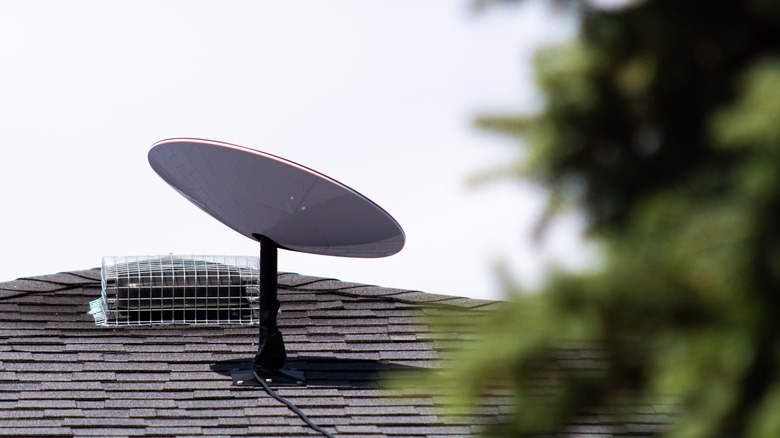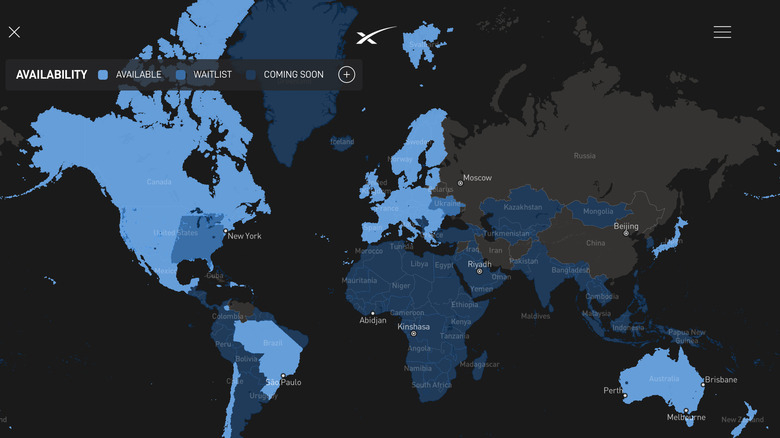SpaceX Starlink Satellite Internet Just Launched In Two Huge Markets
Over in Europe, SpaceX's Starlink satellite internet service is available in western nations like Spain, France, Germany, and Italy, among others. Interestingly, Ukraine is mentioned as a waitlisted region. Elon Musk deployed Starlink terminals in the war-torn country to help the citizens and its army with maintaining core communications, as Ukraine's existing ground-based networking infrastructure came under attack from Russian forces.
It was revealed that the project to sustain Starlink connectivity in Ukraine was partly funded by the U.S. government and a few other allied countries, too. But after it was reported that SpaceX was looking at expenses worth hundreds of millions of dollars and needed help from the government, Musk boldly proclaimed that SpaceX would continue funding Starlink in Ukraine for free.
In a tweet shared by the official SpaceX Twitter handle, the Elon Musk-led company announced that its satellite internet service is also available in Finland, following its expansion of coverage in Sweden and Norway. SpaceX, however, has even more ambitious coverage plans for the near future.
Starlink has bold plans
SpaceX has most recently expanded the footprint of its Starlink internet service to cover the entirety of Canada and Alaska. The updated coverage map on the official Starlink website now shows that the eponymous satellite internet service is available across almost the entirety of North America, while the supported regions in Latin America include Brazil and Chile.
Starlink is now available across all of Alaska and Canada â†' https://t.co/slZbTmYOKV pic.twitter.com/wWMoS8tIx4
— SpaceX (@SpaceX) November 21, 2022
With Canada and Alaska now under its belt, Starlink has achieved the milestone of spanning across North America, offering satellite internet services even in the coldest remote areas of the hemisphere.
Under its "coming soon" plans, the company also reveals it wants to cover the entirety of Africa, most of Latin America, Greenland, and Southeast Asia. Notable omissions are China and Russia, which are neither on the "waitlist," nor in the "coming soon" plans, most likely due to geo-political tensions and national security issues. Starlink's coverage in Asia and beyond is rather limited at this moment, with Japan and Australia being the only regions where SpaceX's service is officially available.
SpaceX, on the other hand, aims to get around these geographical limitations with its marine service, dubbed Starlink Maritime. The coverage map for Starlink Maritime shows that it already covers the coastlines of North America and western Europe, Brazil and Chile in South America, and Australia. By the first quarter of 2023 though, SpaceX aims to cover almost the entirety of international waters.

